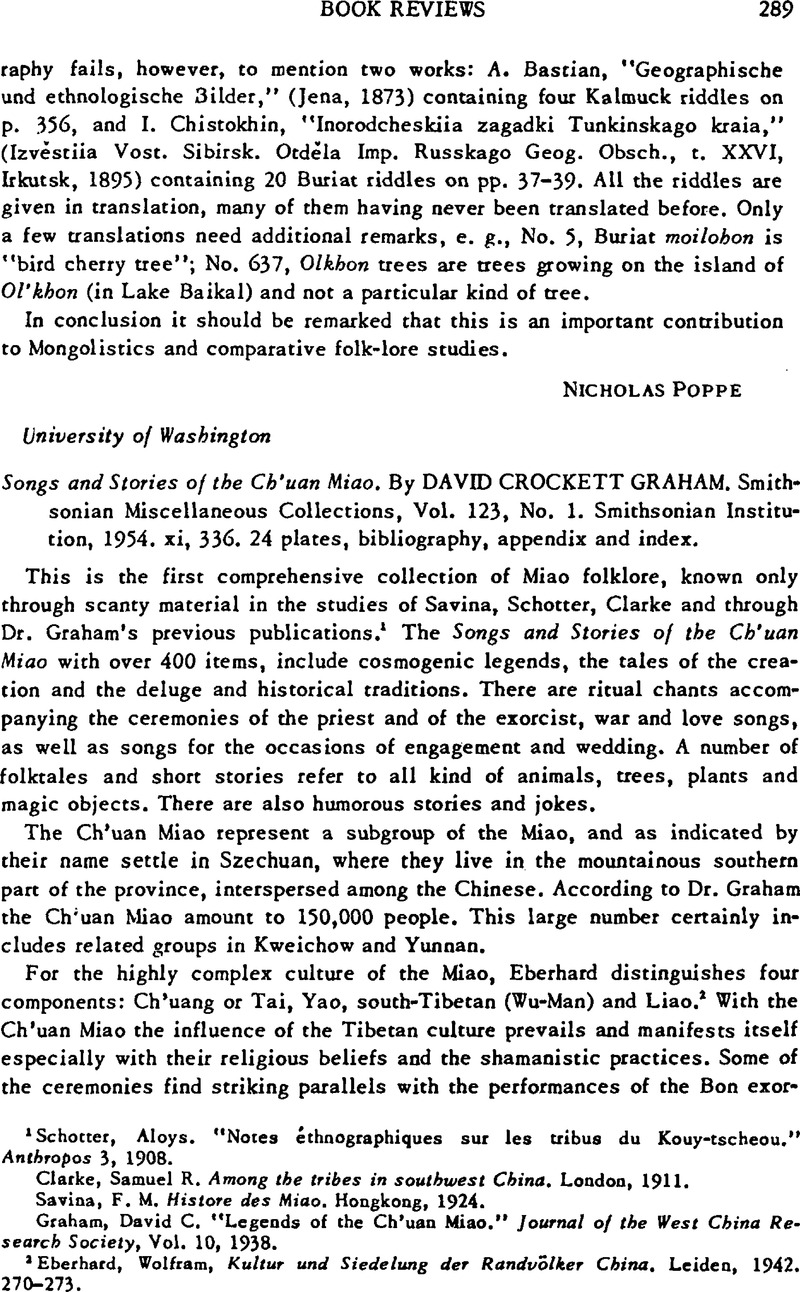No CrossRef data available.
Published online by Cambridge University Press: 23 March 2011

1 Schotter, Aloys. “Notes éthnographiques sur les tribus du Kouy-tscheou.” Anthropos 3, 1908.Google Scholar
Clarke, Samuel R.Among the tribes in southwest China. London, 1911.Google Scholar
Savina, F. M.Histore des Miao. Hongkong, 1924.Google Scholar
Graham, David C. “Legends of the Ch'uan Miao.” Journal of the West China Research Society, Vol. 10, 1938.Google Scholar
2 Eberhard, Wolfram, Kultur und Siedelung der Randvülker China. Leiden, 1942. 270–273.Google Scholar
3 For example, the touching of red hot iron with the tongue, the walking on sharp edges of knives, the spitting of hot oil into the blaze, etc.—Human figures made from straw or kneaded from flour and the blood of the sacrificial animal are further requisites the Bon sorcerers. The dance around the corpse finds its analogue with the Kachin. Cf. Wehrli, Hans J. “Beiträge z. Ethnologie d. Chingpaw.” Internal. Arcbiv. für Ethnographie, Vol. 16, 1904.Google Scholar
4 It is surprising that the Ch'uan Miao have no antiphonal chants, nor in spite of their strong element of sorcery do they seem to be acquainted with the form of black magic known as ku. Cf. Eberhard, , Lokalkulturen im Alten China, Teil 2, 1942, 137–141Google Scholar, and H. Y. Feng and J. K. Shyrock, in JAOS 55, 1935.
5 Eberhard finds parallels not only to the Far Eastern folktale especially the Chinese, but also points out affinities to Near Eastern motifs, while Stith Thompson reveals some tales with European analogues.